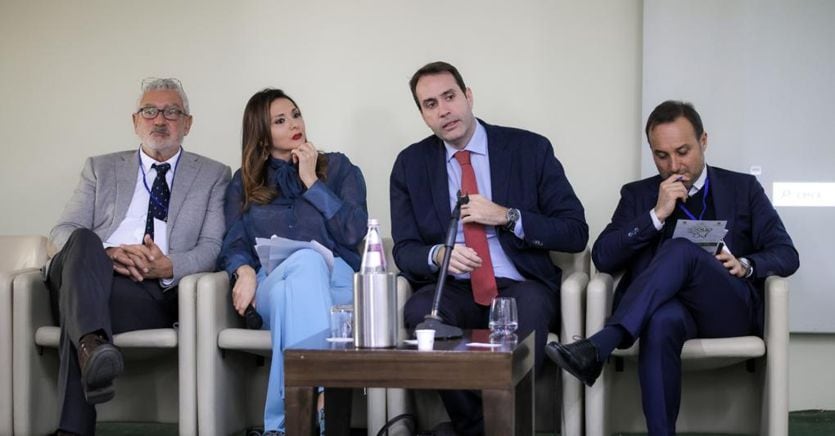Listen to the audio version of the article
An overly fragmented supply chain and climate change are jeopardizing the Sicilian oil sector: less competitive companies on the market and a drop in production put the sector at risk. It is the analysis of entrepreneurs and operators in the sector: almost 200 companies, 50 oil mills and five thousand small producers belonging to Cofiol, the olive oil supply chain consortium, who took stock of the situation in the sector during the 14th edition of the “L ‘Tesolio Island’ at the Hotel La Torre di Mondello in Palermo.
The Barbera entrepreneur: «Oil like Dom Pèrignon»
And it was an opportunity to raise the alarm on the basis of data from the latest olive oil campaign: «Climate change which has seen the continuation of excessive heat since the beginning of last year – explains the olive oil entrepreneur Manfredi Barbera – resulted in the burning of the flowering, with a production drop of over fifty percent compared to the 50 thousand tons of our usual production. Prices have already more than doubled, in a few months we risk that the price will rise even more and that the cost of the oil will be that of Dom Pèrignon. As a company we have invested in a modern olive grove system, which works through a large lake that acts as a water reserve so that when emergency irrigation is needed we can provide it but the increase in prices is alarming to the extent that we are losing shares of consumption. The cost of a liter of oil has gone from 5-6 euros to 13-15 euros and this determines the return to the consumption of seed oil and this is dramatic.”
The main path: innovating the supply chain
Of course the connection with champagne is strong but it is the perspective seen by those who deal daily with the market but also with the fragility of the Sicilian production system. «Sicily pays the price of a supply chain that is too fragmented which means being less competitive on the market, we cannot compete with Spain, which has expanses of immense plains, new olive grove plantings must be planned and it is necessary for the strategic departments to work synergistically to meet the needs of the supply chain” insists Barbera. The way out? «Innovate the oil supply chain, focusing on research and experimentation to face the challenges of the future, to create a modern and sustainable oil but always respecting tradition» explain entrepreneurs and experts. «The average production of oil in Sicily is around 50,000 tonnes – says Tiziano Caruso, professor at the University of Palermo – and in the 2023 season there was a drop in oil production of around 10% despite the fact that olive production was was 30% less in 2023. The lower olive production was compensated by the higher oil yield which on average went from 15 to 19% (+ 4% oil yield in 2023). It is now clear that olive groves can no longer be planted following the traditional model but we must renew ourselves by protecting biodiversity, modernizing the systems by reducing the environmental impact with non-chemical but organic and biological management and with the use of natural products”.
Councilor Sammartino: «Ready to do our part»
And it is the path that the Sicilian Region also seems to want to follow: «The Region is investing in the production chain and has also foreseen the call for oil mills to put mechanization at the center and make Sicilian oil more suitable for the challenges of the future, of sustainability , research and innovation, which await him – explains the regional councilor for Agriculture, Luca Sammartino –. It is essential to both scale the markets and position yourself on a price that can make the work of farmers and processors profitable. As a department we will always be ready to give our support to meet the needs of the millers and, as Barbera has already underlined, it is important to focus on synergistic work between the regional councilors for Tourism, Cultural Heritage and Productive Activities”.
